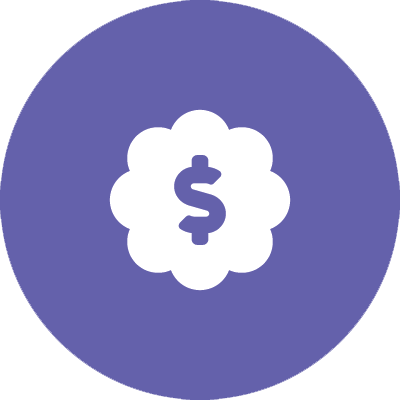FAQ

Bienvenue dans notre centre d'assistance
 Funding
Funding
How do I find relevant courses at my local college or institute?
Search by province through our member directory for a college or institute in your region, and go to the program/course section of their website. Once there, use their search tools to identify relevant training. Most websites allow you to:
- search relevant keywords like “engineering” or “programming” in the program/course search bar
- filter by category like “online courses” or “part-time courses.” You can also search “part-time online programs” or “online courses” on the page search bar.
- search for continuing education courses. Some websites have a different section for continuous education courses.
What are wrap-around services?
Wrap-around services enhance intern experience and increase access to youth facing barriers!
For our Clean Tech Internships, up to $5,000 can be used to cover diverse support costs for Indigenous youth, youth living with disabilities and visible minority youth. Based on the intern’s needs, funding can be used to cover costs of training and mentorship, childcare/family care, relocation costs to a remote community, adaptive and/or assistive computer technology, and transportation for low-income youth, accessible transportation and transportation for field work in remote locations.
Reimbursement for wrap-around services ranges from 80% to 100% of eligible costs based on the employer contribution
Under the program, what is considered a Northern, rural and remote communities?
These communities are defined as follows:
- Northern: Yukon, Northwest Territories, and Nunavut
- Rural community: a population of fewer than 5,000 people and a population density of fewer than 400 people per square kilometre
- Remote community: a permanent or long-term (5 years or more) settlement with at least 10 dwellings that does not have year-round road access
What in-house training is eligible for Digital Tech Internships?
In-house training must be a fully developed training with specific learning objectives. Examples could include:
- specialized training on project management
- training on a piece of machinery
- safety training training on a specific software
In-house training cannot cover any standard onboarding and training offered as part of the new hiring process. Software licences are ineligible expenses. Supporting documents must show the number of hours, the cost associated (i.e. calculation of salary of employee providing the training, materials required, etc.), the learning objectives and must be signed by both the employee who provided the training and the intern who received the training.
Can intern training costs be covered by the Career Launcher program?
Funding for training is dependent on the program stream and availability of funding. Please visit each program for details on the subsidy offered:
Does the subsidy cover Mandatory Employer Related Costs (MERCs) and Vacation Pay?
The subsidy covers employer charges including the Canada Pension Plan (CPP), Employment Insurance (EI) and vacation pay. Employers may choose to pay out the 4% in lieu of vacation or to offer vacation within the contract.
Should employers wish to provide paid vacation days, they will need to ensure that the intern still completes the minimum length of the internship. Please note that the Clean Tech Internships and the Natural Resources Internships need to be a minimum of 26 weeks.
How much do the Career Launcher wage subsidies cover?
Each program covers differing amounts, please visit each program for details on the subsidy offered:
Are wage subsidies under the Career Launcher program taxable?
Yes. According to the Canada Revenue Agency, if you get a grant or subsidy from a government or government agency, you’ll have to report it as income or as a reduction of an expense.
Generally, a grant or subsidy:
- increases your income or reduces your expenses
- relates to an income deficiency
- relates to specific expenses
For example:
- if you are a farmer and you received a payment to subsidize your income in a drought year, you would add the payment to your income.
- If you are a business that receives a government employment grant to hire more students, you would generally deduct it from the wage expense you are claiming.
If your government assistance enables you to acquire capital property, it should not increase your net income. However, for depreciable property, you would reduce the capital cost of the property by the amount of the assistance received. For other capital property, you would reduce the adjusted cost base accordingly.
Can the internship programs funding be combined with the CEWS?
For the Digital Tech and ImpAct programs that already cover up to 100% of the intern’s salary, you cannot combine the funding with the Canada Emergency Wage Subsidy (CEWS).
For the Natural Resources and Clean Tech subsidies, it is possible to combine funding with the CEWS. However, it is important to declare this in your budget so that adequate subsidy calculations can be made. If the CEWS is only indicated at the midterm or end of the internship, it will lead to a reduction in the subsidy payment.
Can I receive subsidies from different delivery organization for different internships?
It is preferred that employers select one delivery organization to work with. It can cause confusion and lead to complications when employers have multiple internships with different delivery organizations.
That said, we understand that due to funding available this may happen, we just ask that employers notify us at the time they apply.
Can I receive subsidies from more than one delivery organization to cover the expenses of the same internship?
No. You cannot receive funding from more than one delivery organization for the same internship. This would be considered “double dipping”.
Find the other delivery organizations here :
- Clean Tech: Science Horizons Internship Program
- Natural Resources: STIP-Green Jobs
- Digital Tech: Digital Skills for Youth (DS4Y)
Can the internship programs be stacked with other external funding options?
Stacking of other federal funding is allowed up to 100% of an intern’s salary. The internship programs are funded under the Youth Employment and Skills Strategy (YESS), therefore you cannot stack funding from another YESS funded program as this would be considered “double dipping”.
Who funds the internship programs?
Colleges and Institutes Canada (CICan) receives funding from the Government of Canada’s Youth Employment and Skills Strategy. CICan acts as a delivery organization for the following programs:
- Clean Tech: Science Horizons Internship Program (Environment and Climate Change Canada)
- Natural Resources: STIP-Green Jobs (Natural Resources Canada)
- Digital Tech: Digital Skills for Youth (DS4Y) (Innovation, Science and Economic Development Canada)
- ImpAct: Employment and Social Development Canada

